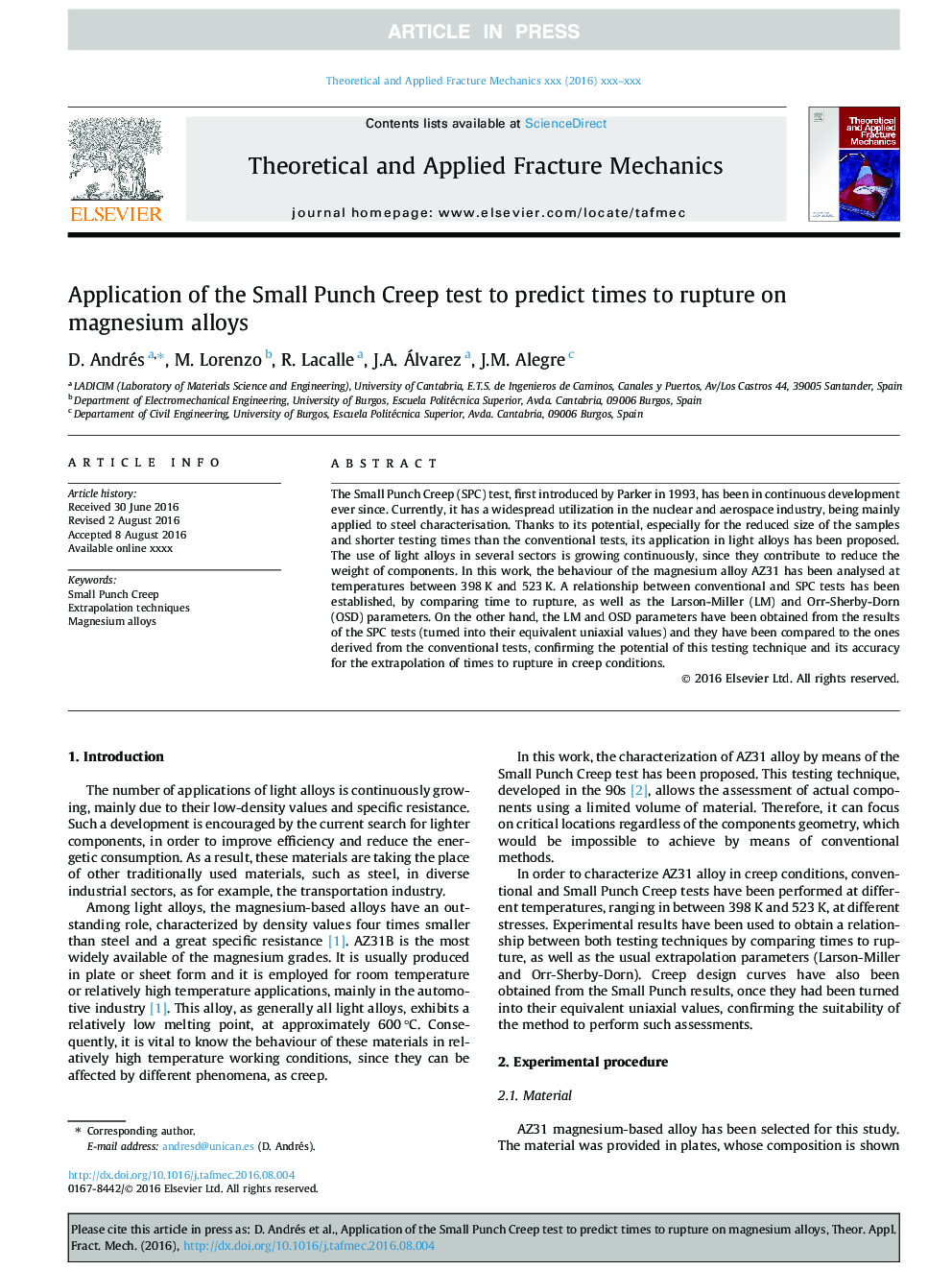| Article ID | Journal | Published Year | Pages | File Type |
|---|---|---|---|---|
| 5019798 | Theoretical and Applied Fracture Mechanics | 2016 | 6 Pages |
Abstract
The Small Punch Creep (SPC) test, first introduced by Parker in 1993, has been in continuous development ever since. Currently, it has a widespread utilization in the nuclear and aerospace industry, being mainly applied to steel characterisation. Thanks to its potential, especially for the reduced size of the samples and shorter testing times than the conventional tests, its application in light alloys has been proposed. The use of light alloys in several sectors is growing continuously, since they contribute to reduce the weight of components. In this work, the behaviour of the magnesium alloy AZ31 has been analysed at temperatures between 398Â K and 523Â K. A relationship between conventional and SPC tests has been established, by comparing time to rupture, as well as the Larson-Miller (LM) and Orr-Sherby-Dorn (OSD) parameters. On the other hand, the LM and OSD parameters have been obtained from the results of the SPC tests (turned into their equivalent uniaxial values) and they have been compared to the ones derived from the conventional tests, confirming the potential of this testing technique and its accuracy for the extrapolation of times to rupture in creep conditions.
Related Topics
Physical Sciences and Engineering
Engineering
Mechanical Engineering
Authors
D. Andrés, M. Lorenzo, R. Lacalle, J.A. Álvarez, J.M. Alegre,
